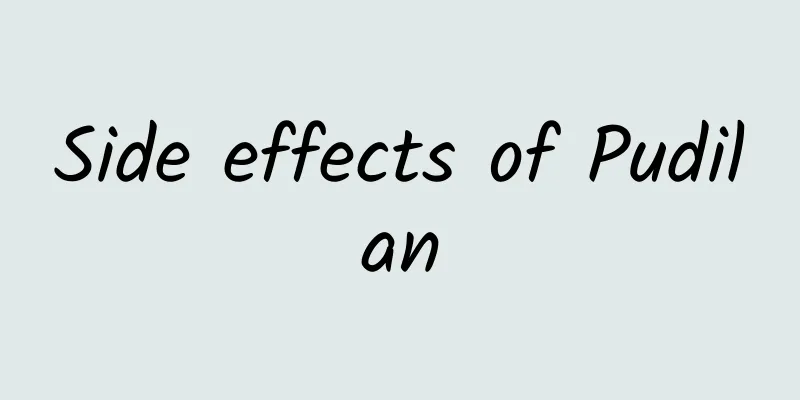What are the medicinal values of boy's urine?

|
Boy's urine was often used as a medicine inducer in ancient times. The so-called boy's urine is the urine of men who have not yet reached adulthood or have not yet produced sperm. There are records of using boys' urine as medicine in ancient times, and there is a certain scientific basis for this, but modern people believe that urine is a kind of excrement and a waste product produced in the body. So, can boy’s urine really cure diseases? What are the medicinal values of boy’s urine? The idea that boy's urine can cure illness or be a tonic has historical and cultural roots. In Chinese herbal medicine, human and animal urine and feces have always been considered as medicines that can treat various difficult and complicated diseases, and this can be traced back to ancient times. In Compendium of Materia Medica, Li Shizhen calls human urine "reincarnation wine" and "returning origin soup", which is especially good for boys. Just like the logical framework of traditional Chinese medicine, the use of human urine to treat diseases has its mystical basis (note). Other human urine products used as medicine include niubai (ren zhongbai), qiushi and linshi. It is mainly used to treat various diseases, such as cold and heat headache, abdominal distension, improve eyesight and voice, moisturize the skin, benefit the large intestine, relieve cough and pulmonary emphysema, stop thirst, moisturize the heart and lungs, stop vomiting blood and nosebleed, treat difficult labor, retained placenta and snake and dog bites, etc. Ancient Egypt and ancient India also used animal feces and urine to treat diseases, but the records are not as rich as those in ancient Chinese medicine. Ancient humans had a chaotic and ignorant understanding of nature, and medicine at that time was completely witchcraft, so there was no need to blame them. However, with the advancement of modern science and medicine, people still insist on believing in these practices of the ancients, which is worth pondering. The use of boy's urine to treat diseases has long been popular among the people. When I was a teenager, someone came to my house to ask for urine to treat lung disease. At that time, anti-tuberculosis chemotherapy drugs had just been introduced and were extremely difficult to obtain. Severe tuberculosis was an incurable disease, and children's urine might have had a soothing effect. Traditional Chinese medicine was particularly promoted around 1958, and there were many reports in medical journals about the use of human urine or boys' urine to treat diseases. The article that impressed me the most was the article about using urine bubbles to prevent and treat measles. There is obviously no scientific basis for using human urine to treat diseases or provide tonic benefits. First, let’s take a look at what’s in human urine. Urine is basically water with a small amount of inorganic salts, so it tastes a bit salty. In addition, urine may contain very small amounts of sex hormones and metabolites of adrenal cortex hormones or other body components. Joseph Needham and Lu Guizhen, two famous British researchers of the history of Chinese science and technology, once wrote that the traditional Chinese medicine Qiushi (the "white matter" made from urine sediment in the human body) contains sex hormones, so the Chinese used hormones earlier than the West. This sounds intoxicating, but it is actually pure speculation. * A few years ago, there were many urine buckets in public toilets in some places to collect urine, which was said to be used to extract the thrombolytic drug - urokinase. There may be some abnormal components in the patient's urine, such as protein or sugar in the urine of patients with kidney disease and diabetes. The above substances are present in very small amounts in urine and are unlikely to produce any pharmacological effects. There is no difference between boy's urine and adult's urine. Note from Liaoning Province Urine Therapy Association: The article "Ten Common Senses of Urine Therapy" was written by Comrade Guo Feng himself and several comrades from the association based on the problems encountered in the promotion of urine therapy in recent years. These ten points focus on basic, practical and applied needs, and are the ten points that should be grasped in the process of popularizing urine therapy. During the writing process, relevant experts and several Chinese and Western doctors were consulted. Comrade Guo Feng personally made careful revisions to the manuscript based on the experts' opinions and finally completed this draft. The purpose of publishing it now is: first, to strengthen the confidence of urine therapy practitioners; second, to hope that people from all walks of life will recognize urine therapy, participate in urine therapy, and support urine therapy. We firmly believe that once we understand something, we will actively participate and support it, and once we participate and support it, we will be able to gain a deep understanding of it. 1. Urine is a clone of blood, sterile and not dirty Why are some people afraid of drinking urine? The main misunderstanding is that urine is considered as dirty excrement and is confused with feces. Excrement is the end product of the metabolism of substances in the human body. The process of transporting substances in the body from the blood circulation to the outside of the body is excretion. Urine and feces are discharged from the body through two different tubes. Feces are the residue left after people absorb the nutrients and water from chewed food, which are excreted from the body through the large intestine. The residue after digestion of these foods - feces are not real metabolic products, are not transported out of the circulating blood, and are not included in the excrement. Urine is the nutrients (including some water) absorbed from chewed food into the blood. It circulates through blood vessels in various parts of the body, and the body absorbs nutrients as needed. The excess is filtered by the glomerulus and absorbed by the renal tubules to form urine - the real metabolic product, which is stored in the bladder through the ureter and excreted from the body after accumulating to a certain amount. Urine and blood have the same origin. Blood is the biological parent of urine, and urine is the clone of blood. Its chemical composition comes from blood and is the same as that of blood. Medical laboratory personnel all know that the urine of healthy people is sterile, so it is clear that it is a misunderstanding to think that urine is dirty and drinking urine is harmful. 2. Analysis of urine components and their functions Scientific tests and analysis have shown that urine is a sterile liquid, and it is known that urine contains more than 100 trace active substances, of which about 95% is water and the rest is solid. Among solid substances, inorganic substances include sodium, potassium, chloride, sulfate, phosphate, ammonium salts, calcium ions, etc.; organic substances mainly include urea, urokinase, epidermal growth factor, growth hormone, erythropoietin, gonadotropin, kallikrein and anti-tumor peptides, etc., which are all substances beneficial to the human body. For example, urokinase can convert plasminogen in intravascular clots into plasmin, thereby dissolving the clots that obstruct blood flow; epidermal growth factor has the function of regulating cell proliferation; growth hormone has the function of promoting protein synthesis and cartilage development, and also has the function of breaking down fat; erythropoietin has the function of promoting red blood cell production; gonadotropin makes menstruation normal and promotes sperm formation; vasokine has the function of dilating peripheral blood vessels and lowering blood pressure; anti-cancer factors have the function of inhibiting the proliferation of cancer cells and transforming cancer cells into normal cells; the various trace elements and enzymes in urine help the body digest and absorb, promote metabolism, and regulate balance. In addition, urea is the end product of protein metabolism and has certain toxicity, but it also has strong antibacterial effects and can inhibit bacterial proliferation. About 95% of urine is water, so some people say "drinking urine is not as good as drinking water", but the water in urine is different from ordinary water. At the first national academic seminar on urine therapy, Professor Jin Dongxie of Shenyang University of Traditional Chinese Medicine pointed out that the water that surrounds and nourishes normal human cells is a hexagonal structure, and 62% of the water in urine is hexagonal. Drinking urine can not only replenish the hexagonal water molecules in the human body, but also enhance the vitality of cells and delay human aging. This effect is incomparable to ordinary water. 3. What is the mechanism of urine therapy in strengthening the body and curing diseases? Urine therapy is a biological therapy that belongs to the category of natural medicine. It goes beyond the field of symptomatic treatment with chemical drugs and uses its own inherent "body-generated medicine" to achieve "disease treatment" on the basis of "health preservation". The saying “urine therapy can cure all diseases” is mainly said in this sense. The basic characteristic of human survival activities is metabolism. During the metabolism process of human body, urine contains a variety of trace active substances which play a coordinating and balancing role on the three major network systems of autonomic nervous system, endocrine system and immune system in human body. Treating diseases with urine is different from general medicine, which mainly relies on enhancing the body's own immunity and improving the body's natural healing ability to achieve the purpose of strengthening the body and eliminating diseases. From the perspective of the urine formation process, urine and blood have the same origin, "urine is the clone of blood". Both urine and blood carry various information about the human body. The proof is that blood and urine tests are the basis for physical examinations. The urine separated from the blood not only carries disease information (antigens), but also carries antibodies produced by the human immune system to fight the disease (antigens). When people drink urine, they also absorb these antibodies into their bodies, thus enhancing the body's ability to fight disease. This is why Dr. Ryoichi Nakao, a Japanese urine therapy advocate, calls urine therapy "biofeedback therapy." From the analysis of the components and functions of urine, urine contains a variety of active substances such as enzymes, hormones, interferon, etc. After returning to the body, they can replenish the active substances needed by the body, improve immune function, regulate the secretion of substances needed by the body, and improve the metabolism of active substances in the body. The above is an introduction to the medicinal value of boy's urine. It can be seen that boy's urine still has certain medicinal value, but it must be done under the guidance of professionals. You cannot drink urine blindly, as this will cause great harm to the body. However, if the disease is not a last resort, it is best not to use boy's urine to treat the disease without authorization. |
<<: What are the medicinal values of boy's urine?
>>: What are the medicinal values of iron tree leaves
Recommend
The efficacy and function of beech leaves
Traditional Chinese medicine culture is profound ...
Those cute but ferocious "little" animals
Those cute but ferocious "little" anima...
What are the Chinese herbal medicines for calming the nerves and nourishing the brain?
People today are under high stress. Not only do t...
"Four satellites in one rocket" at sea! China's first private rocket launch at sea, what is the significance?
At 17:34 Beijing time on September 5, 2023, my co...
The efficacy and function of Rhubarb[Picture]
Rhubarb [Picture] is a very common Chinese medici...
Can Coptis chinensis really lower blood sugar?
Coptis chinensis is a very familiar Chinese herba...
The efficacy and function of hair grass dragon root
Hairy grass dragon root is a kind of traditional ...
The efficacy and function of fire vine leaves
For many Chinese people, traditional Chinese medi...
The efficacy and function of Penglai grass
Herba Penglaiae is a famous traditional and commo...
The efficacy and function of cat's whiskers
Cat's whiskers flower is a medicinal material...
4 million people died prematurely! How can cooking at home still cause serious pollution?
A study recently published in International Envir...
The difference between the efficacy and function of licorice and licorice
Raw licorice and roasted licorice are both tradit...
The more you lack something, the more you want to show for it. Why is this so?
In life, we often encounter such people. We all k...
The inspiration for the "underground dragon" shield machine actually comes from a mollusk
Produced by: Science Popularization China Author:...
Meteor hammers, maces...how many other tricks can a dinosaur's tail have?
Dinosaurs are definitely the stars of ancient cre...




![[Creative Cultivation Program] The amazing Nobel Prize-winning experience originated from the love of mathematics in youth](/upload/images/67f0e68018ed6.webp)




